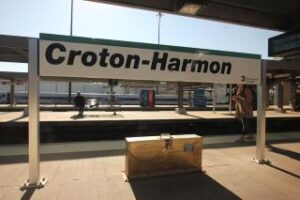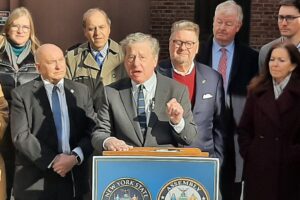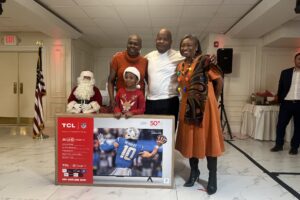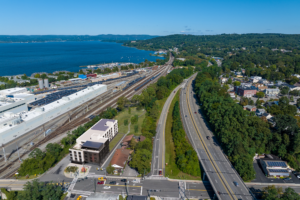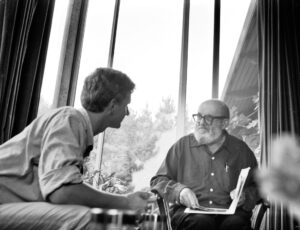
In 1968, as rebellion raged across Europe and the Unites States, Croton-on-Hudson’s Jaroslav Jung was a 21-year-old photographer, rock climber, and serial adventurer, embarked on an idealistic bicycle trip from his native Czechoslovakia, where students stoked Prague Spring, a street-level revolt that roiled a country reeling under the Soviet Union’s boot heel.
Serving as official ambassadors of the new government, charged with spreading the word about their nation’s attempt to institute Socialism with a soul, Jung and two riding partners planned to tour Western Europe and the United States, ending up in Mexico City, site of the Summer Olympic Games.
On their way to Amsterdam, the party encountered violent student protests in Paris and Brussels. After landing in New York, they encountered another tumultuous scene at Columbia University, where students protesting the Vietnam War ripped the film from Jung’s camera and roughed him up.
“So many crazy things happened around the world that year, but we had no idea what was going on because we didn’t get information like you do in the United States,” said Jung, who still speaks with a strong accent. “We were shocked, especially when we visited colleges and universities, because all the students were really worked up.”
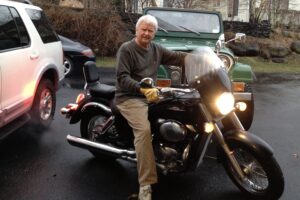
After one companion became too ill to continue, Jung and another partner journeyed to Omaha and Los Angeles. There he met with relatives for the first time and shared photos with Ansel Adams and silent film star Harold Lloyd. He also socialized at the home of Edward G. Robinson and angered comedian Dick Martin by eating his expensive caviar.
The media treated the sojourners like rock stars, but meanwhile, the Soviets had invaded their homeland and crushed the rebellion, making it too dangerous for Jung and his friend to return home.
They received asylum and Jung eventually got his parents out. The family settled in Los Angeles, where he opened a photography studio and snapped portraits of film stars from the past, including Gregory Peck, Sidney Poitier and Ingrid Bergman, among many others.
After his children grew up and moved east, he followed 13 years ago. “Instead of flying all the time, I figured we’d settle here,” he said. “It was a good move.”
Inspired by the work of street photographer Henri Cartier-Bresson, he took many photos while walking around Manhattan after he first arrived, although he aimed to take upbeat shots.
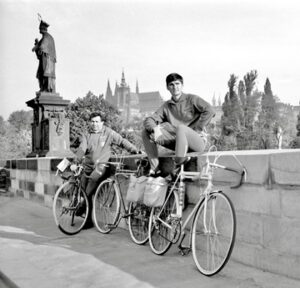 “He got too depressing,” said Jung of Cartier-Bresson. “I was looking more for the ‘life is beautiful’ angle.” Now, his photographic passion is mainly focused on fall foliage and animals, which he snaps at Teatown Lake and Blue Mountain Reservation.
“He got too depressing,” said Jung of Cartier-Bresson. “I was looking more for the ‘life is beautiful’ angle.” Now, his photographic passion is mainly focused on fall foliage and animals, which he snaps at Teatown Lake and Blue Mountain Reservation.
Ever the adventurer, he shakes his head while looking at a photo of himself angling his body to get a shot while half-sitting on a rock 2,000 feet in the air: “what the heck was I thinking?“
At age 77, he enjoys riding a mountain bike on the Old Croton Aqueduct Trail. When he wants more of an adrenaline jolt, he conquers Blue Mountain. He also owns two motorcycles and enjoys taking them out, too.
Passive pursuits include practicing alternative medicine and publishing photography books. The first covers his early years in Czechoslovakia. “It’s how I saw the world of communism, with no food and no money,” he said. Another chronicles his journey in 1968.
Now, he is compiling photos of old-time celebrities taken during casual moments, including Elvis Presley, Anthony Quinn and Peggy Fleming. And, he still stores several items in his home from the epic tour that eventually brought him to Croton.
“We were totally gung-ho and euphoric, seeing as much as we could in three months,” he said. “It’s hard to explain because [the United States] always had freedom and we didn’t, so when we got a taste of it, it was mind-boggling.”



